
a gift
for the
children
exploring the beautiful illustrations in Yiddish children’s literature : Part II
“.װאו עס זײַנען קינדערלעך, דאָרט איז פֿרײד פֿאַראַן"
Where there are children, there is joy.
- Kinder, Rivka Galin (1890-1935) in far di kleyne kinders vegn
Welcome to Part II of A Gift for the Children
Chosen for their range of style of illustration, Part II features workbooks, chapter books, collections of poetry and long-form poems. While many of the books in Part I were published in Europe with European Jewish children as their primary audience, the post-war books in the JPL’s ephemeral collection featured here were all published in Canada, Mexico, and the United States of America. The content is geared foremost towards Jewish children living in North America, and several were specially created for the students at Montreal’s Jewish day schools. Visit Part I to learn more about our prewar period texts and for an introduction about the important space that children’s literature allowed for artists and writers in the early 20th century.
As in Part I, Part II of A Gift for the Children discusses the space that Yiddish children's literature provided for many great artists and writers of the 19th and early 20th century to experiment, hone their craft, and find their voice, and this chapter dives even further into how they actively introduced Jewish art and storytelling to the proverbial table of world cultures. Creating children's literature shows a commitment to modern Jewish life in the present and into the future--by addressing children through their art and literature, these works serve as a source of pride in Jewish heritage. In this modest online exhibition, we have included a range of original Yiddish works as well as a few translated and adapted stories from other cultures and languages to show the richness of Yiddish cultural production and dialogue post-war.


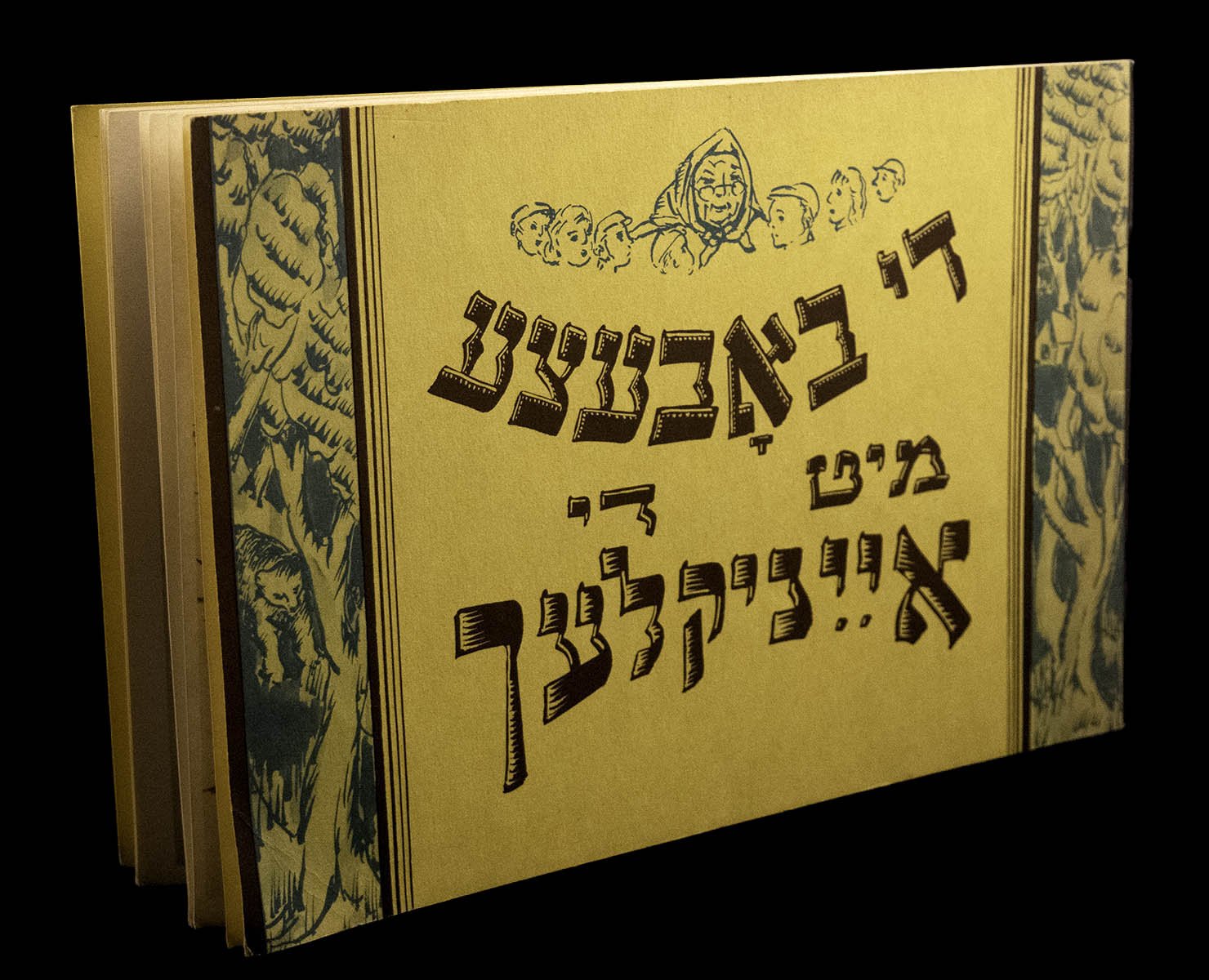
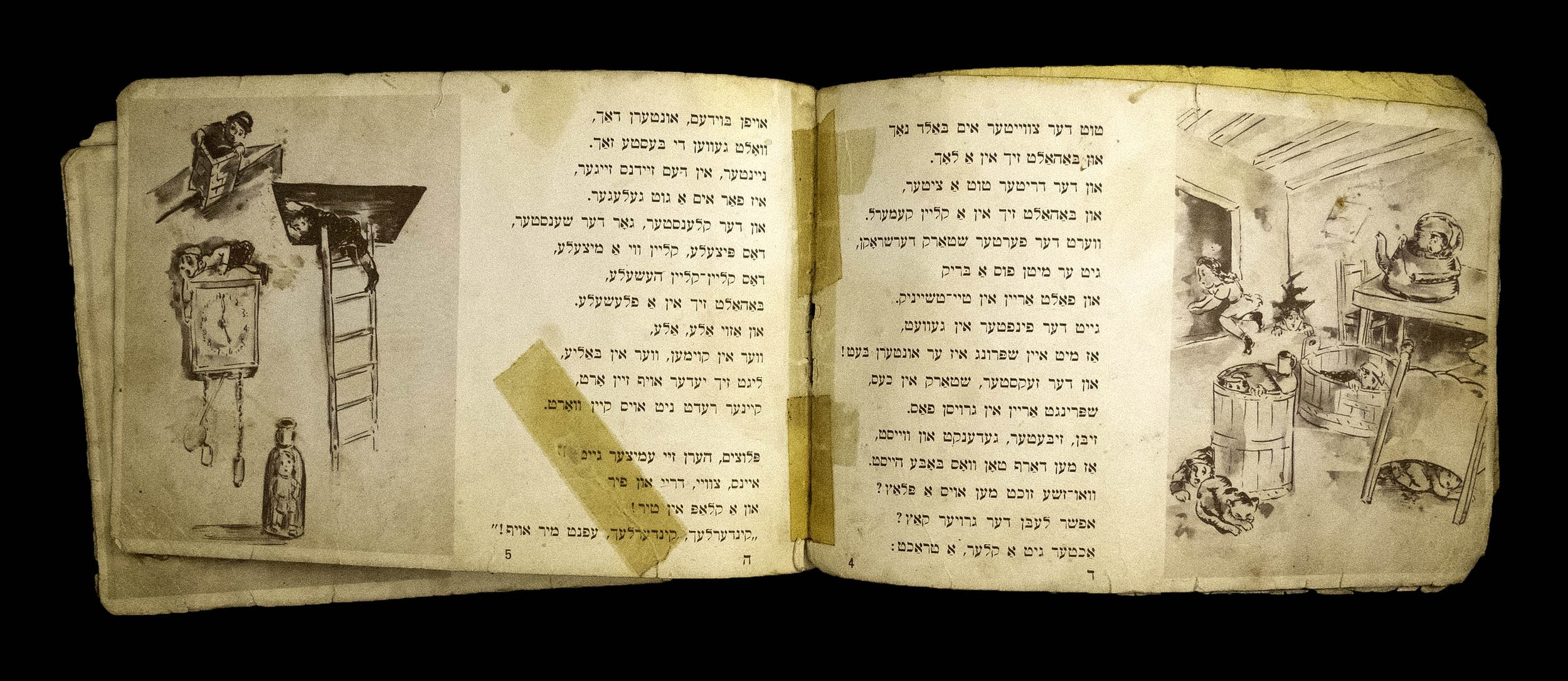
Di bobetse mit di eyniklekh
The Grandmother and the Grandchildren, 1945
The JPL has two copies of this little local publication in the collection: one in pristine condition with crisp pages and stiff binding, and the other worn, brittle, covered in tape, and obviously well-loved over the 80 years since it was printed. Published by the Jewish School Publishing Association in Montreal, the dedication indicates that it was "a gift to the children of the Montreal Jewish People’s School”, a tender note which served as the inspiration for this exhibition series. An adaptation of a folk tale well known in many European cultures, it may be familiar to some as A Nanny Goat with Seven Kids. (Leyb Kvitko also wrote a Yiddish version of this tale, which has been translated to English in Honey on the Page.) The rhyming version we have here was adapted by Ita Vaynman and illustrated by Yechiel Shainblum, and each spread features two sepia-toned ink drawings framing the text. The painterly quality of the brush strokes suits the chaos of the story, where a bear attacks the house while the grandmother is out, and she returns to slay the bear and save the children. Ita Vaynman was a beloved kindergarten teacher at the Folks Shule for decades, and Yechiel Shainblum was a prolific artist who dedicated his career to teaching several generations of students at the Jewish day schools in Montreal.
A NOTE ABOUT THE JEWISH SCHOOL PUBLISHING ASSOCIATION:
An arm of the Yiddish schools in Montreal, the Jewish School Publishing Association published educational materials for their own students and occasionally to schools in other Yiddish networks. The funds were sourced from small donations as well as significant gifts from community members, with the goal of providing relevant, engaging Yiddish educational material to Yiddish students in Montreal.
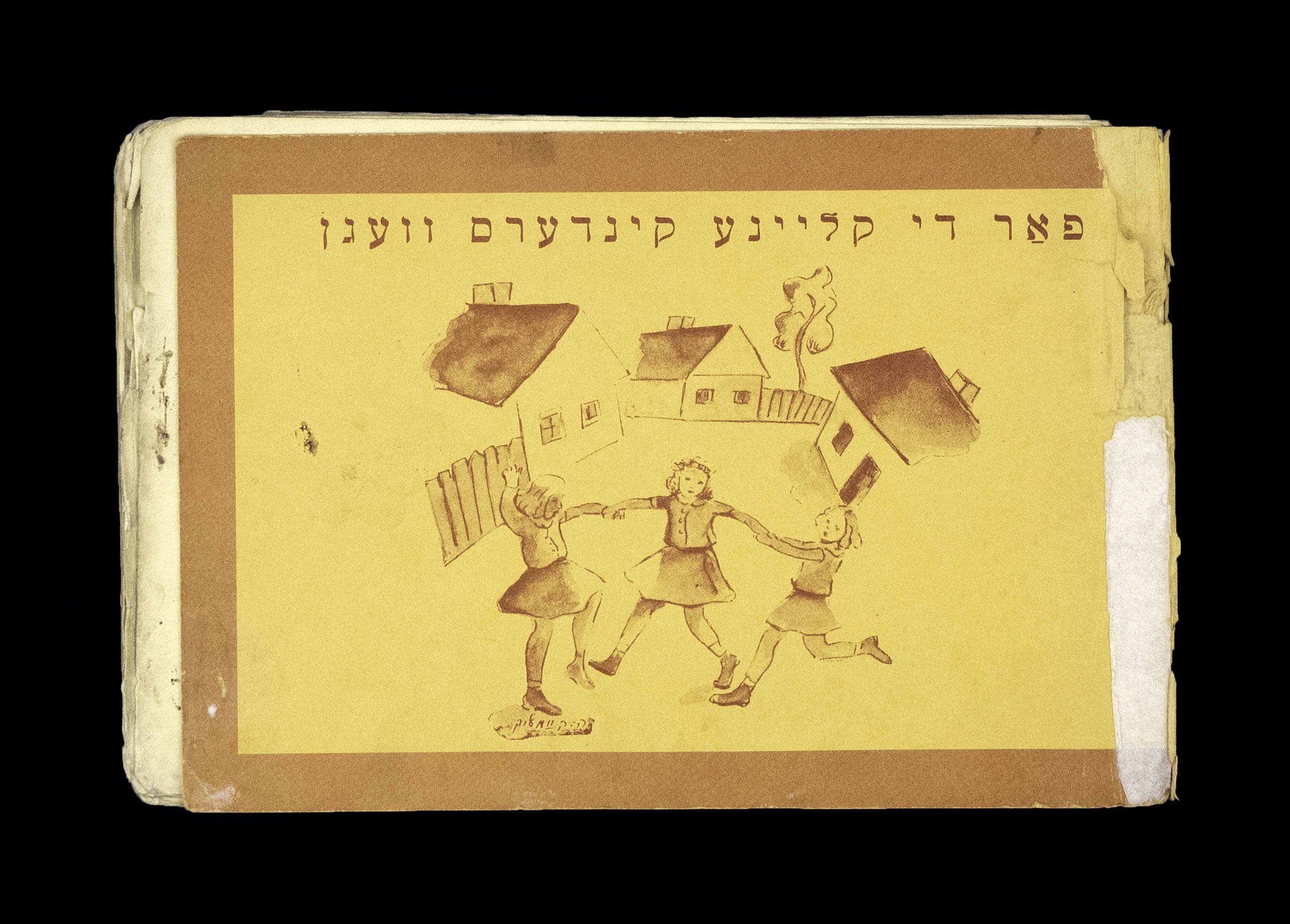

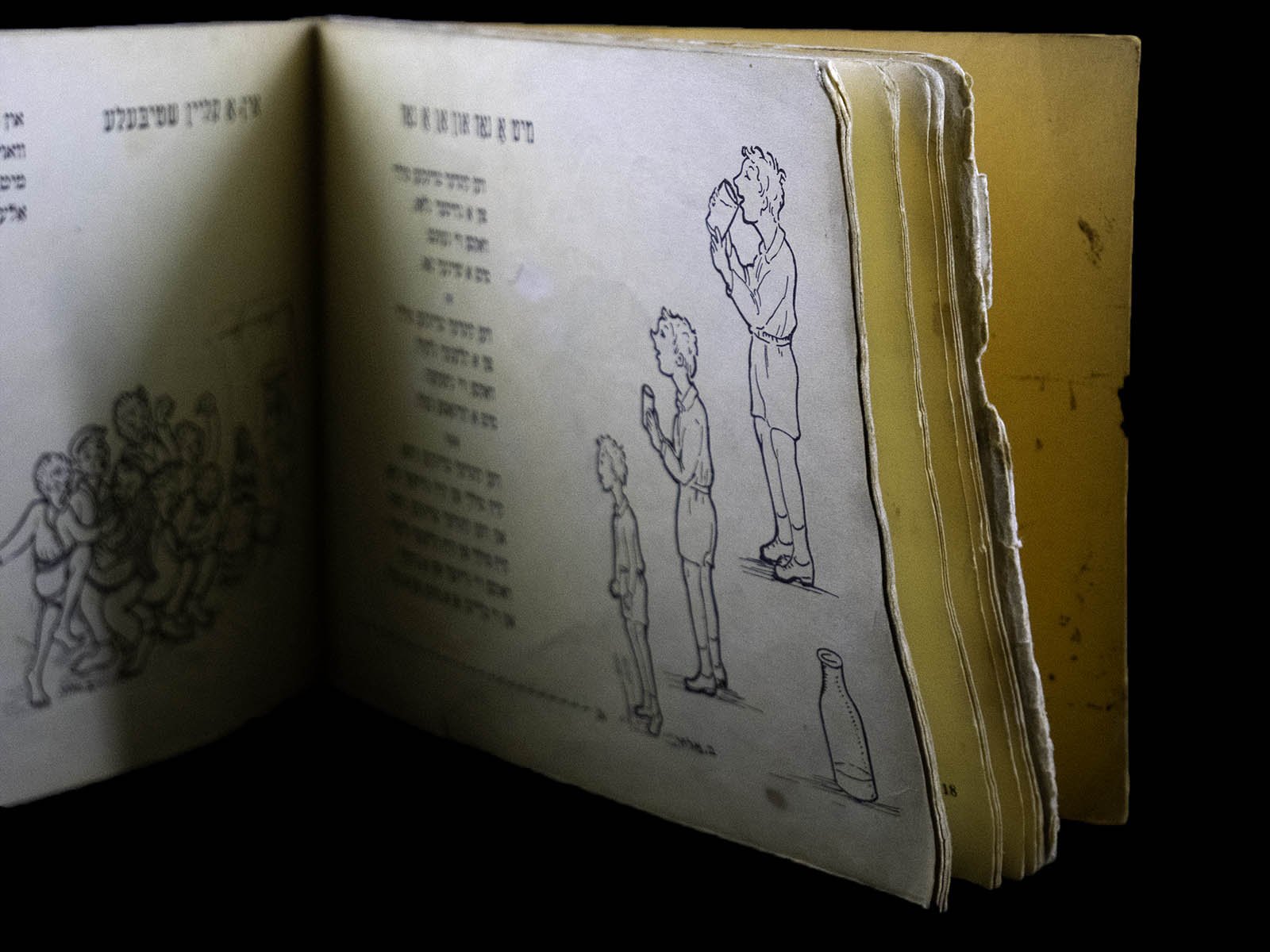
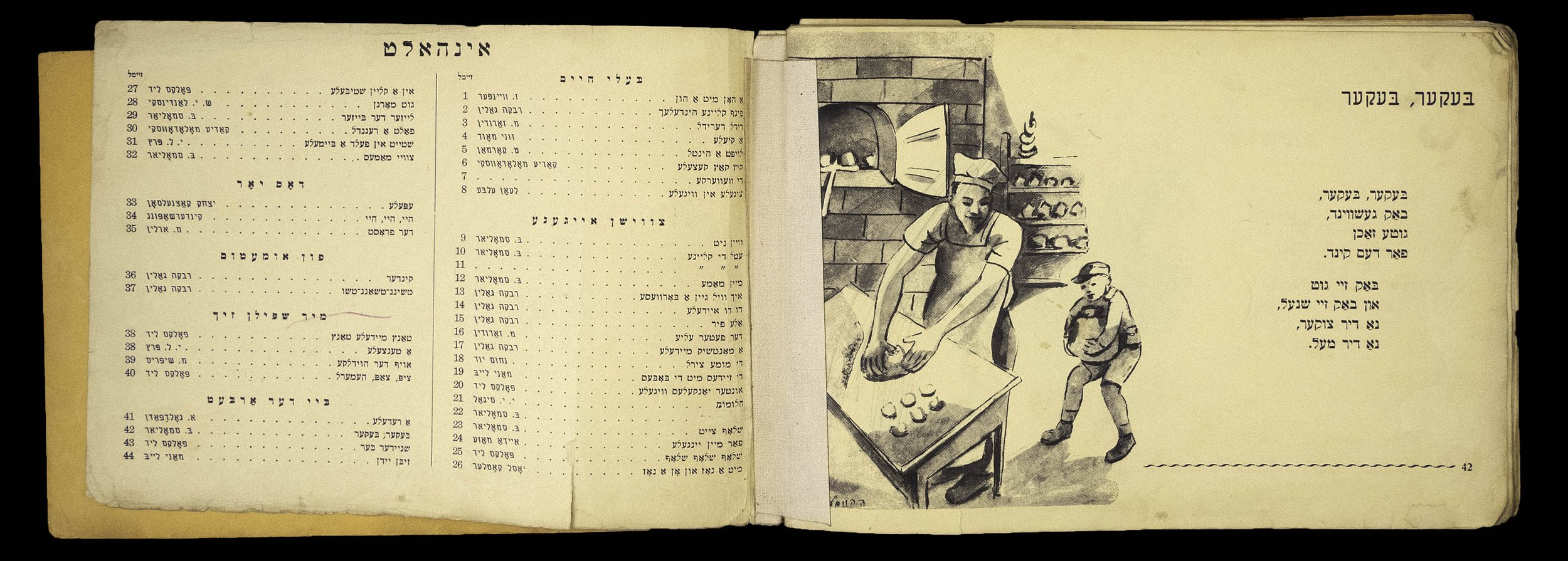
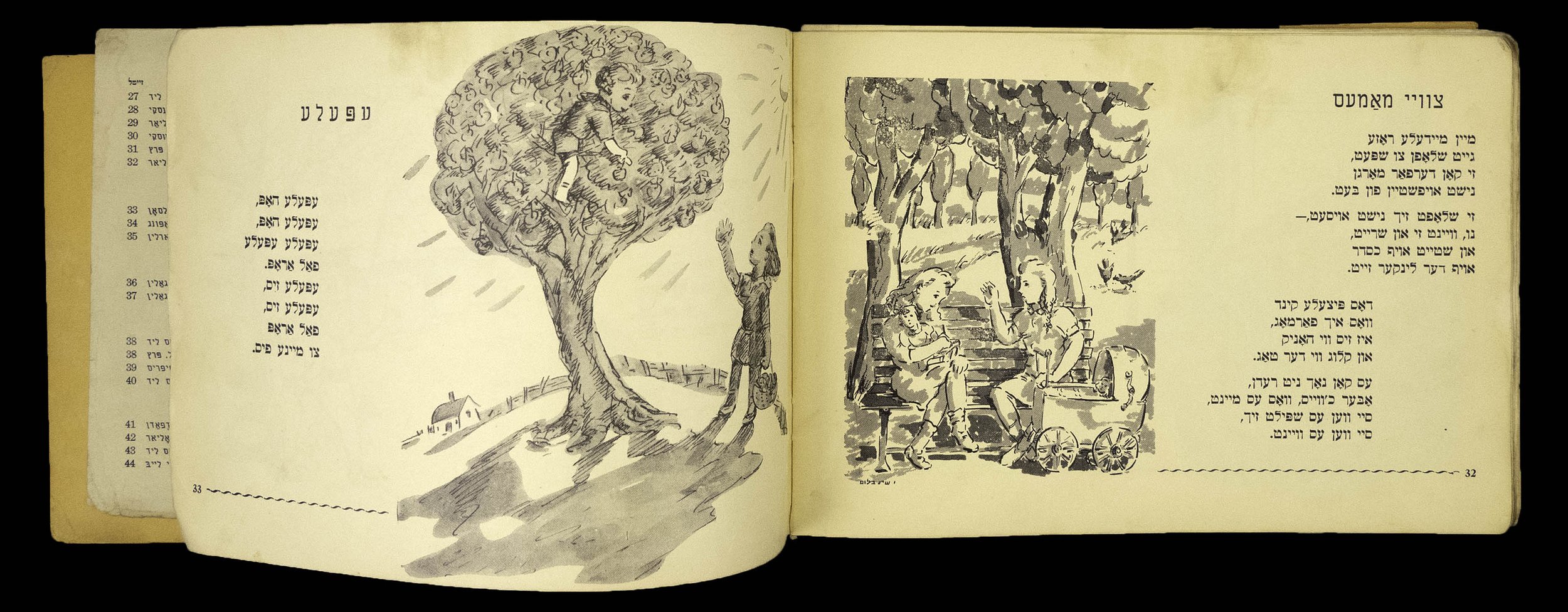
Far di kleyne kinders vegn
For the Sake of the Small Children, 1945
Also published by the Jewish School Publishing Association in Montreal, in the same year as Di bobetse miṭ di eyniḳlekh, this volume features a different short poem or song on each page (or in a few cases, each spread) by more than twenty authors, including I. L. Peretz and Rivka Galin. The poems are accompanied by illustrations from three different artists, including the sculptor and painter Bezalel Malchi, Herman Heimlich of the Jewish Painters of Montreal, and Yechiel Shainblum, the same illustrator as above. Malchi takes on a simple, linear style to his ink drawings, alternating thick, intentional lines with thin lines to indicate movement in his scenes. Heimlich also uses distinct lines but adds washes of ink to add depth and shadow. Again, Shainblum’s signature painterly style contributes a great deal of movement and chaos to his illustrations.

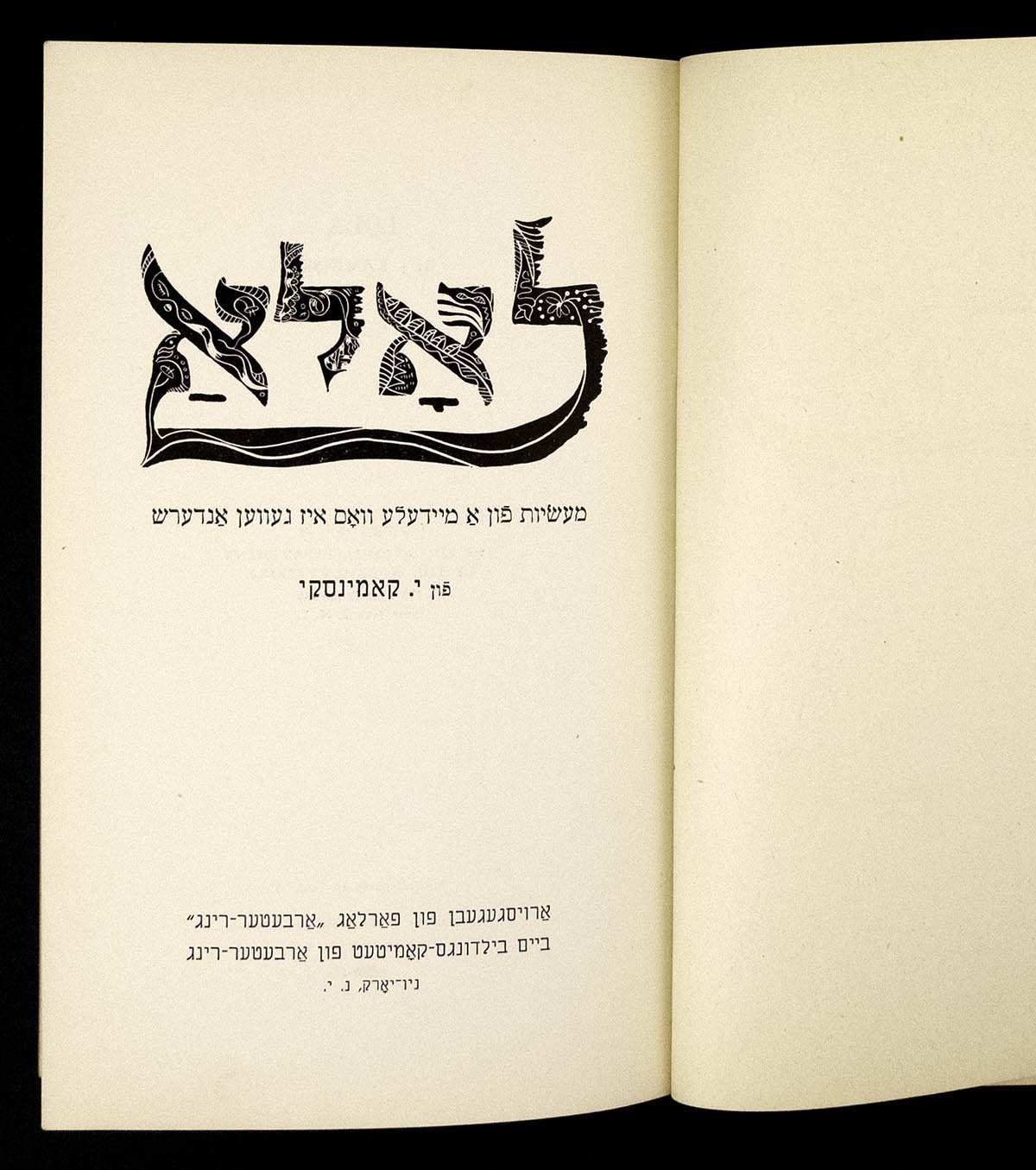
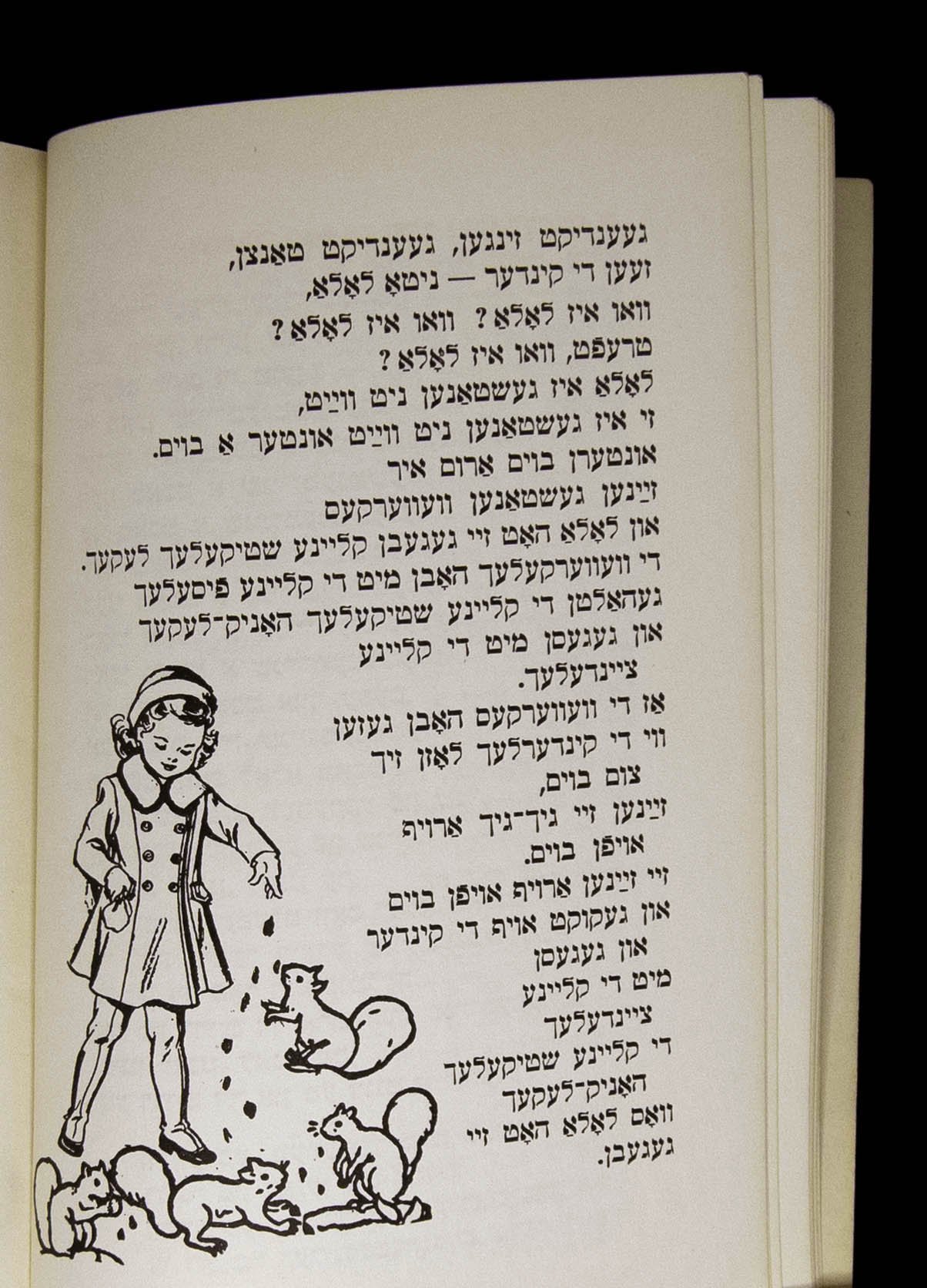
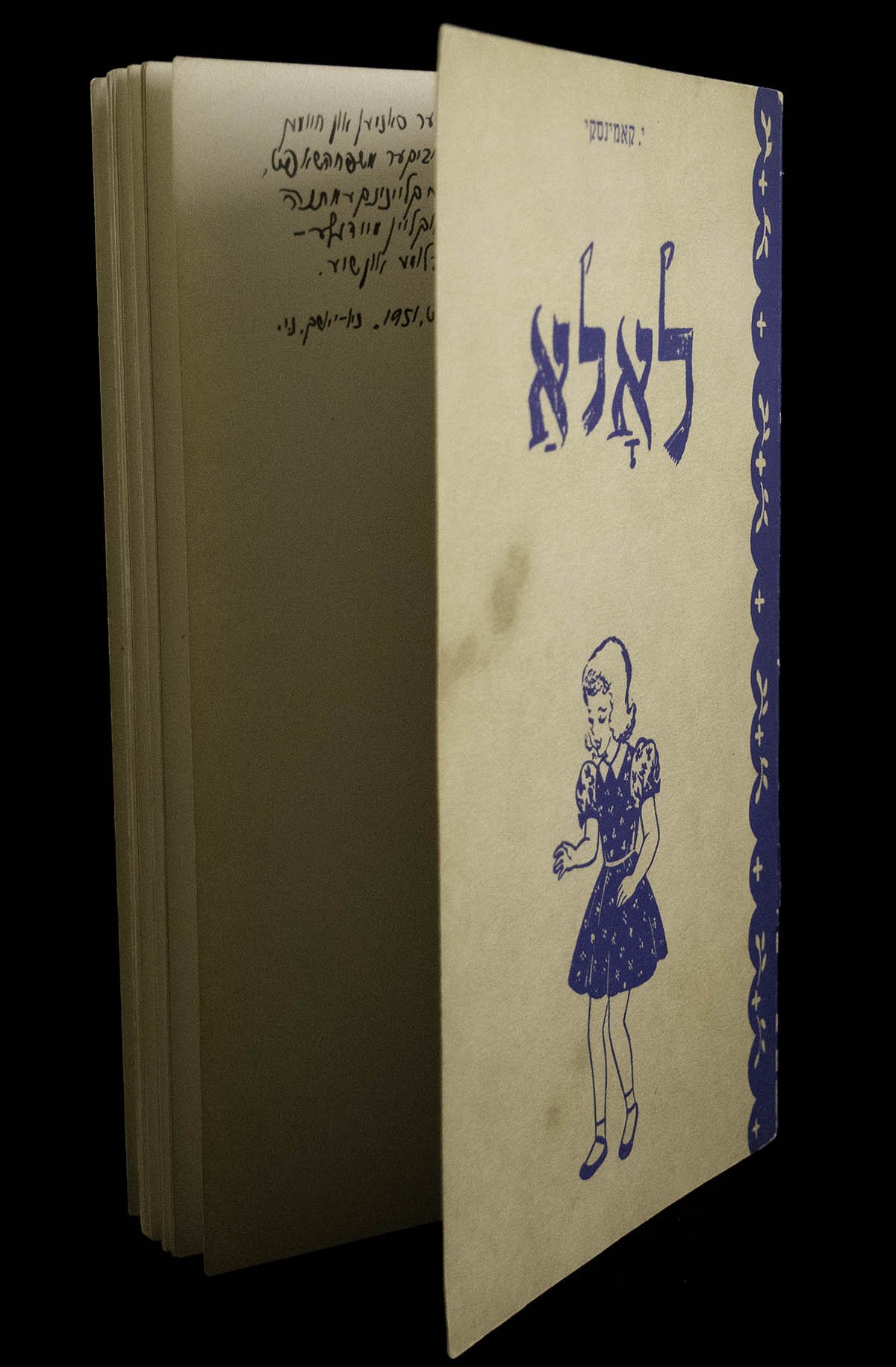
Lola : mayses fun a meydele vos iz geven andersh
Lola: A story about a girl who was different, 1951
If Lola was a real person, she would be 76 this year; but in this story, she’s a four-year-old kindergartener. The story chronicles her adventures making friends, going to the beach, taking Yiddish classes, celebrating Jewish holidays. There is a hint of social justice ideals throughout the story, which comes as no surprise as it was published by the education department of Der Arbeter Ring (Yiddish for “The Workers Circle”) in New York City. In one chapter, Lola celebrates her first May 1st (International Labour Day).
The children are working and listening to the teacher speaking:
“Today, no one is working in the factories. Workers and those who cherish freedom,
are going out into the streets and the squares
and with flags and songs and music, are marching, row by row, through the streets,
and they vow to one another that all people are brothers, that all people are equal and that all people must live in harmony...
All the people of the world.”
This book was written by Yehoyshue Kaminski (1884-1958), who had emigrated to the US from Malyn, present day Ukraine, by 1906. It does not list any illustrators, but given the marked stylistic change halfway through, it seems that the first half is illustrated by one artist, and the second half by another. The first illustrator draws in very tidy lines, much like those found in the advertisements and fashion magazines of the 1950s, which make the characters look dainty. Lola’s hairstyle and outfit closely resembles that of Jane from the Dick and Jane book series that would have been well known to the audience’s English-speaking contemporaries. The second illustrator, whose work begins on page 22, has a more simplified, cartoonish style. Lola also finds herself amongst children of varying ethnicities, illustrating the multiculturalist experience of New York City’s neighborhoods. While the drawings are interesting, the lettering on the title page stands out—intricately hand-drawn floral elements fill each letter of Lola’s name. There are no other traces of such patterns throughout the book, and these may have been done by yet a third unknown illustrator. A tender note peaks out from the first page, which reads:
To our Sonia and Khaim, in everlasting family bond this small gift about a small girl-
from Bluma and Shie, March, 1951, New York, N.Y.



Di shney-malke / La reina de la nieve
the snow queen, 1955
Di shney-malke is a Yiddish translation of Hans Christian Andersen’s The Snow Queen (Snedronningen in the original Danish). Published in Mexico City in 1955, it also contains a back-cover in Spanish, despite none of the content of the book being in Spanish. The history of Jews (and Conversos) in Mexico dates back to the 1500s, with the conquest and colonization of Mexico. While early Jewish populations were predominantly Spanish and Judeo-Spanish speaking Sephardim, the 19th and 20th century saw Jewish populations from across Europe and the Middle East settling in Mexico, who brought with them their languages and cultures. By the Second World War, Mexico City especially was a centre of Yiddish language education, publication, and cultural activity.
Translated by Der Nister, the pen name of Pinchus Kahanovich meaning ‘The Hidden One,’ the publication date on this edition is 5 years following his death in 1950, which indicates this was likely a secondary edition of his translation into Yiddish. The detailed line drawings provide a strong sense of setting, and the daintiness of the Snow Queen is juxtaposed to the exaggeration of the witch characters’ features, not unlike common depictions of Baba Yaga of Slavic folklore.

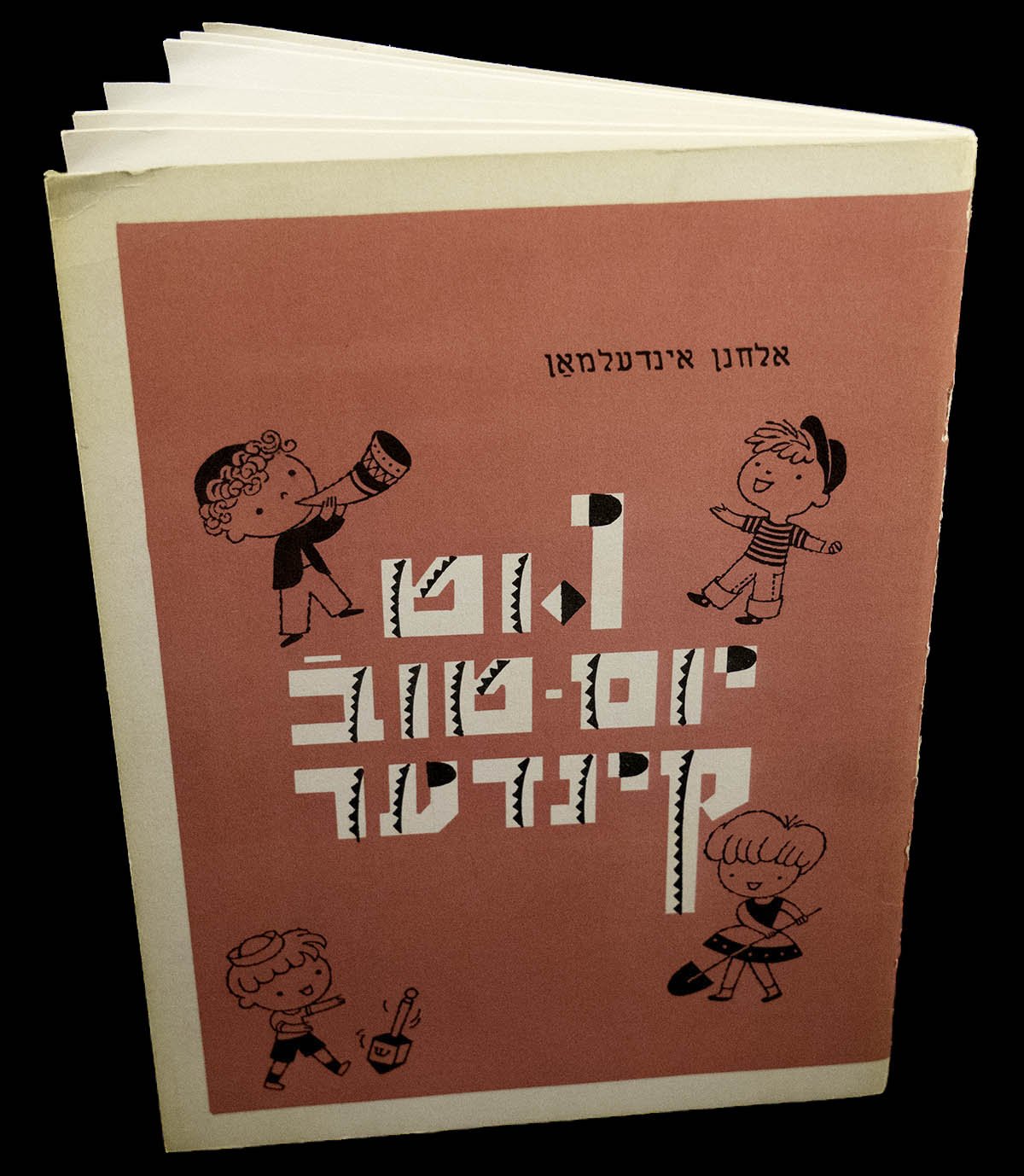


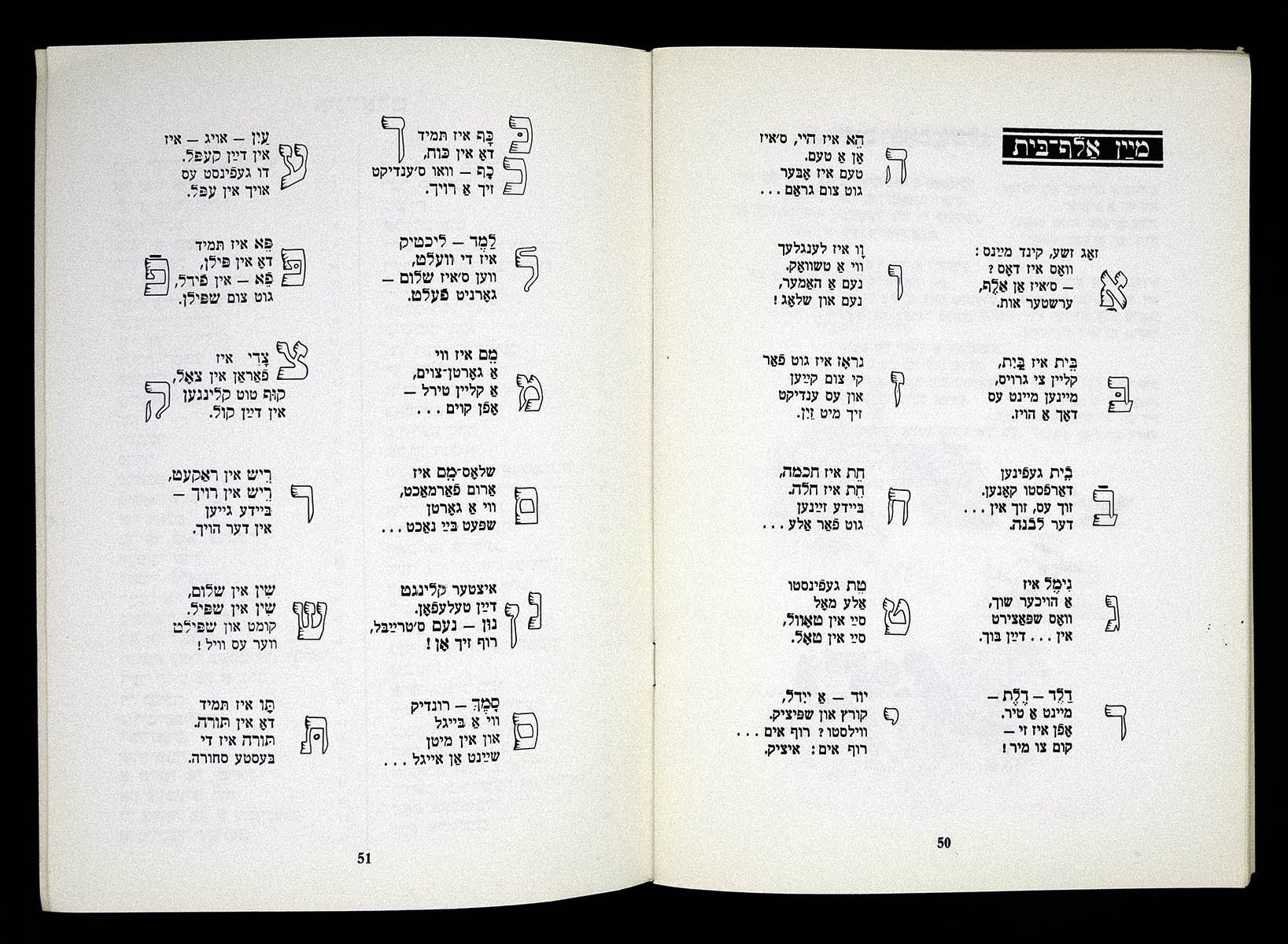
Gut yontev kinder
happy holidays, kids!, 1958
Written by Elchanan Indelman, this book is organized by holiday; it contains Bible stories, as well as information about how each holiday is celebrated. It is the first volume published by the Jewish Education Committee of New York and includes an introduction by Yiddish linguist and educator Yudl Mark. Three illustrators’ black and white drawings and prints are featured throughout the staple-bound book, identified as Ila Goitin, Arnold Lebl and Yehezkel Schloss. It is possible, however, that Arnold Lebl is Arnold Lobel; famed illustrator and author of the Frog and Toad series. So far, no other works by Arnold Lebl can be found, and there is no confirmation of this book in his repertoire, but it is possible that this was a small commission produced in his early years, prior to his rise to children’s book fame.


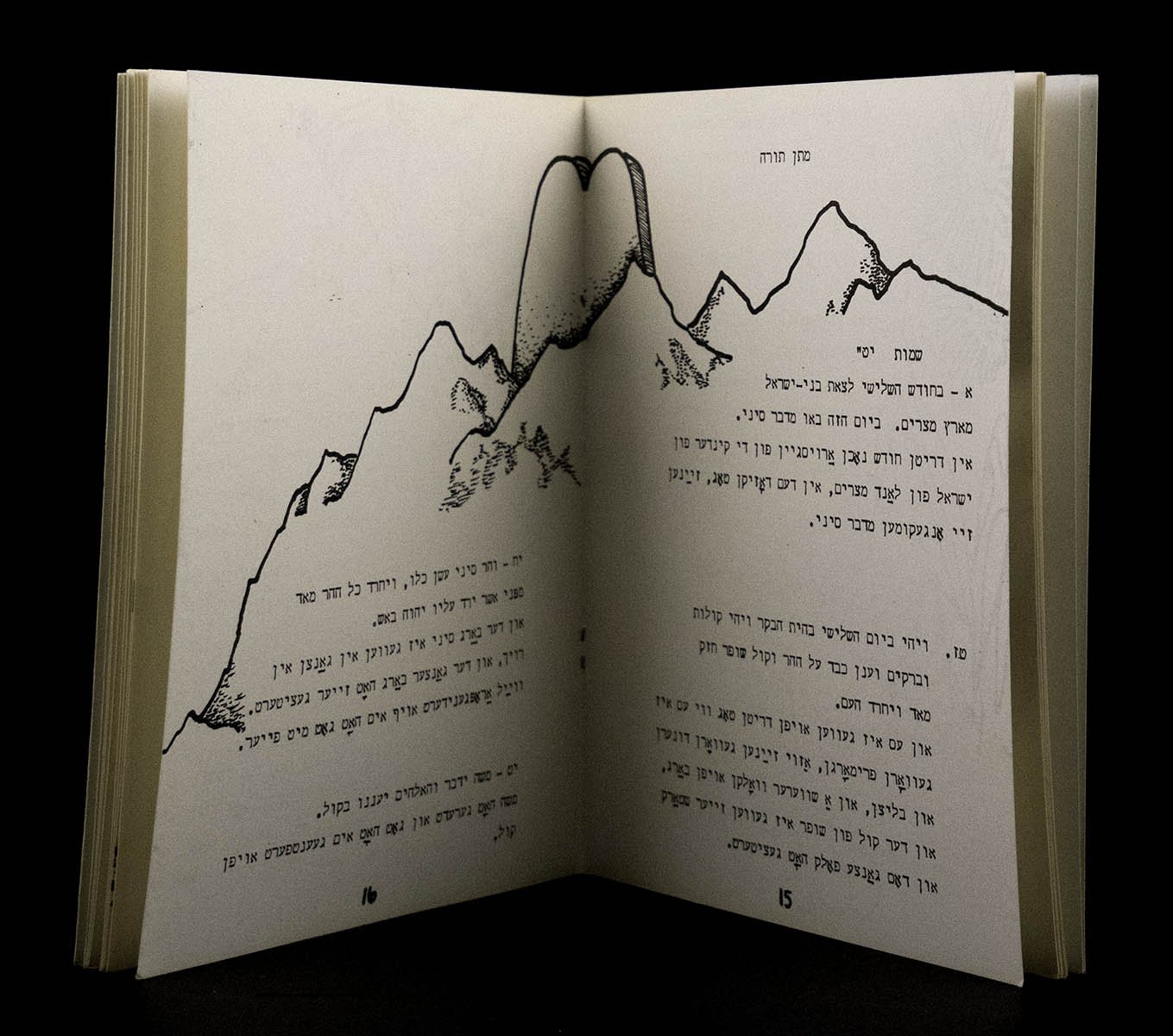

shvues
shavuoth, 1972
The major difference between this book and many of the others highlighted in this exhibition is that it is both story and activity book. Prepared by the Jewish People’s Schools and Peretz Schools, it includes rhyming poems by (unnamed) teachers, and illustrations by Montreal-based artist Sue Rusk. As the name suggests, all of the crosswords, puzzles and poems revolve around Shavuot. While the inscription on this copy indicates that it was gifted directly to the JPL, we expect that this would have been printed in large numbers and distributed to the children at the schools during the counting of the Omer, leading up to the Feast of Weeks.
The cover is a beautiful olive green with a stylized blade of wheat. The illustrations inside of the book are all black and white, with a mix of typed and handwritten text. The drawings scattered throughout are sketchy and evoke lots of movement, not unlike the work of Quentin Blake, the illustrator of many Roald Dahl books.


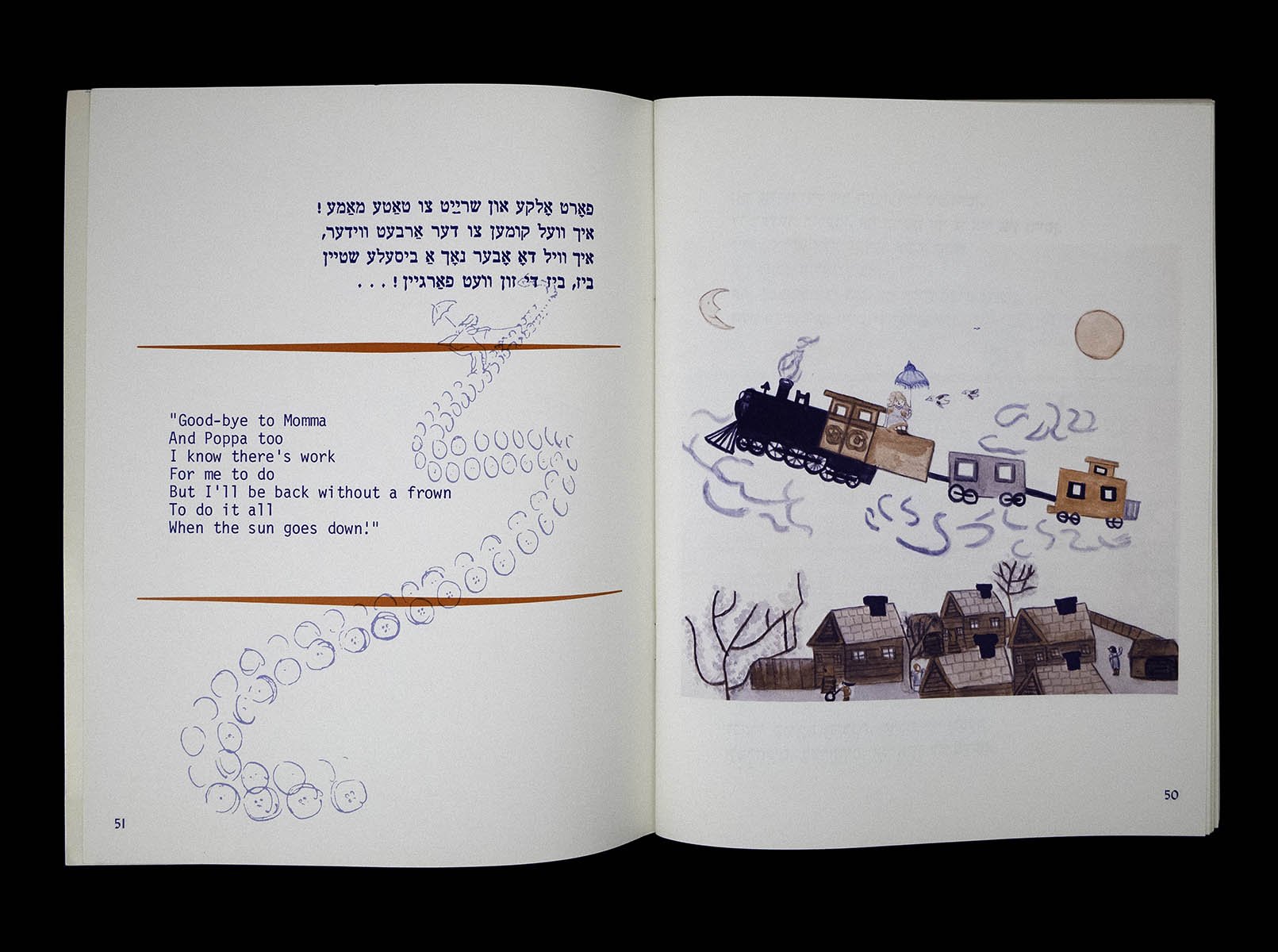
Olke mit der bloyer parasolke
Olka and Her Blue Parasol, 1976
The newest and largest book featured in the exhibition, Néema Lakin-Dainow's adaptation, which differs in a few notable ways from author Kadya Molodowsky’s original tale, is readable in Hebrew, Yiddish, and English on each spread. The poem is about Olka, a young girl who’d rather be doing anything other than her chores, and who continuously gets whisked away into magical adventures with her blue parasol. Lakin-Dainow’s adaptation situates Olka in a shtetl, Yiddish for a town, but it is worth noting that Molodowsky’s version took place in a poor district of Warsaw. Molodowsky’s initial audience were her Yiddish students living in this same district in Warsaw in the 1930s, and the choice of location alongside them was important to her story.
The story, in this version, ends when Olka runs away, vowing to return to finish her chores after sundown. Molodowsky’s version does not mention Olka’s return. The telling differs slightly in each language, as well; the English adaptation is closer to the original Yiddish than Natan Alterman’s translation into Hebrew, which frequently condenses the stanzas and changes Olka’s name to Ayelet. The color schema of red, white, and blue is present in both the book’s design as well as each illustration. The illustrations, by an unnamed artist, are heavily stylized, with simple lines, colour blocking, and minimal shading, and are reminiscent of the kind created by children rather than for them; but the artist’s perfect perspective demonstrates her mastery of the medium.
Meet our collaborators
ALONGSIDE OUR EDUCATION OUTREACH COORDINATOR, ELLEN BELSHAW, JPL WISHES TO THANK ANNA FISHMAN GONSHOR AS WELL AS OUR 2023 RESIDENT SCHOLAR SHLOMO JACK ENKIN LEWIS FOR THEIR INDISPENSABLE CONTRIBUTIONS TO A GIFT FOR THE CHILDREN: PART II.
ANNA FISHMAN GONSHOR
Former president and director of the Jewish Public Library, Anna Fishman Gonshor is a Faculty Lecturer of Yiddish Studies at McGill University and a Montreal-based Yiddish activist. She is a long time faculty member of YIVO’s summer program, teaching courses in Yiddish literature and culture. She provided integral editorial and contextual support to ensure all Yiddish materials were properly attributed and translated.
SHLOMO JACK ENKIN LEWIS
Shlomo is a Jewish Studies student working towards an honours B.A. at McGill University. Their work as a language specialist for the Yiddish Book Center's Wexler Oral History Project and experience as a translator have prepared them well for engaging with the JPL's archives and special collections. As a native Yiddish speaker, they are passionate about preserving, studying, and promoting access to Jewish history. They see the potential of historical knowledge and preservation to inspire and enliven the future.

